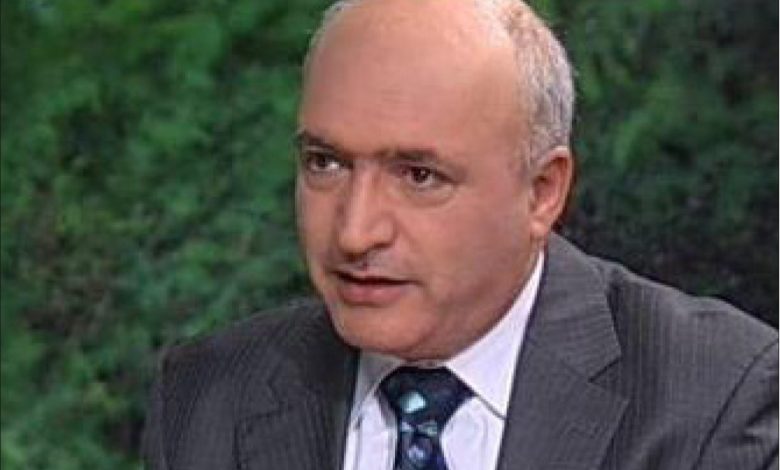Control Over Lebanon’s Front: The Boundaries of Risk

by Nasser Kandil
In escalatory steps over a week, the Occupation’s army targeted civilians wounding and martyring, a woman and child being among the martyred in the town of Mansouri, with air raids reaching the outskirts of Lebanon’s south targeting the town of Ghazia south of Sidon, and yesterday reaching the outskirts of the city of Baalbak. Such escalation coincides with what some espouse as the possibility of an Israeli war with the escalation seen as a sort of gradual progression towardsit, but is this true?
In spite of appearances suggesting what some call a breach in the rules of engagement on the Israeli side, the fact is that there have been no final rules of engagement since the 8th of October, with the opponents on each side trying to draw new rules of engagement and imposing it on the other. This is what Al-Mukawama (Resistance) has done by imposing in itschoice of weapon and target the formula of: range for range and classification for classification. What the Israeli is doing is an attempt to impose new rules of engagementby focusing its incursions to a depth between 40 km and 80 km, with the possible intent of getting Al Mukawama to match such steps on the principles it had set forth, i.e. range for range, leading to a qualitative escalation, which the Israeli maybe be looking for to shuffle the cards in a war apparently not in line with its wishes either on the Lebanese front or the Gazan.
Parallel to that, while avoiding the infliction of tens of casualties through targeting markets and buildings, the Israeli has been directing strikes towards big cities with massive population blocs and a large and thriving economic life to drive the residents out of cities of considerable economic weight such as Nabatiyeh, Ghazia, and Baalbek, in addition to inflicting economic paralysis in Al Mukawama’s milieu, given that the balance has been in Lebanon’s favor, with an approximate 50,000 displaced individuals from the south against 250,000 displaced settlers. The goal is clear, namely seeking to convince Hizballah with fire power to come to a negotiated settlement which gives benefits to Lebanon on its southern front instead of the pre-condition of ending the war on Gaza, as well as making it a good choice for Hizballah in view of the price it is paying for holding on to its declared position of no arrangements on the Lebanese front prior to ending the war on Gaza.
In this context, the Occupation’s army is seeking to achieve side-benefits not insignificant in its calculations, namely inflicting structural damages to Hizballah’s combat fabric, through intelligence operations targeting effective middle level cadres who represent the combat nerve center in armies. Hizballah, on the other hand, is relying on a different methodology for the management of the front, always having as a starting point the possibility of the outbreak of a large scale war either slipped into, or decided on and waged by the enemy, or even waged by Hizballahin an unpredictable moment in which Hizballah finds waging it to its benefit.
From this perspective, opening the front to combat as a background of support for Gaza’s front and setting ending the war on Gaza as a pre-condition for negotiations on conditions on Lebanon’s front did not preclude Al Mukawamafrom setting tactical goals in face of the enemy. Opening the front robbed the Occupation of the surprise element in the event it decided to start the war, and targeting its high precision technology served as preparation for a large scale war waged by either the Occupation or Al Mukawama, or otherwise slipped into without an apriori decision. And while the Occupation has been seeking to identify targets bolstering its publicized image and waging psychological warfare by saying that it targets whomever it decides to target of Al Mukawama’s cadres and any geographical location whether close or distant,
Al Mukawama has been seeking to inflict damages which cannot be quickly remedied by the enemy. For that reason its focus from Al Nakoura to the Shaba’a Farms longitudinally, and to Meron depth wise, has been on targeting intelligence and operational installations which in some cases require 3 years to restore and render operational, as in the case of the Meron military base.
In this context of escalation, the Occupation had been relying on target expansion in an attempt to divert Al Mukawama from tying the end of war on the Lebanese front to ending it on the Gazan front. Al Mukawama, in the same context, has been impressing its insistence on such ligature and bearing down in terms of the number and kinds of missiles launched as well as the nature of chosen targets.
The front appears to be in an escalatory state, but does not appear ready to get out of control. The case is such that the decision for waging a large scale war has requirements and consequences which have not ripened on either of the opposing fronts. What has emerged is a clear geometric equation: Al Mukawama does not want war but does not fear it, while the Occupation wants a war but fears it, and he who wants a war is incapable of wagingit, and he who is capable of waging a war does not want it.


